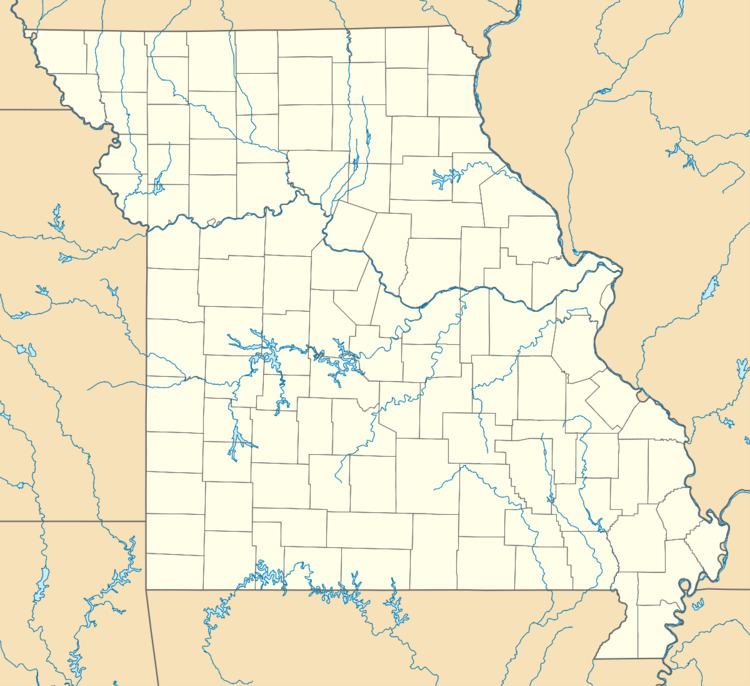Airport type Public Website kirksvillecity.com/... Elevation 294 m | Owner City of Kirksville Elevation AMSL 966 ft / 294 m Code IRK Phone +1 660-665-5020 | |
 | ||
Address 27161 Airport Trail, Kirksville, MO 63501, USA Similar Cape Air, La Plata Station, Enterprise Rent‑A‑Car, Crescent Electric Supply C | ||
Truman student learns to fly at kirksville regional airport
Kirksville Regional Airport (IATA: IRK, ICAO: KIRK, FAA LID: IRK) is seven miles southeast of Kirksville, in Pettis Township, near the village of Millard. One airline schedules passenger flights, subsidized by the Essential Air Service program.
Contents
- Truman student learns to fly at kirksville regional airport
- Plane makes rough landing at kirksville regional airport
- History
- Facilities
- Airlines and destinations
- Incidents
- References
Federal Aviation Administration records say the airport had 684 passenger boardings (enplanements) in calendar year 2008, 926 in 2009 and 2,127 in 2010. The National Plan of Integrated Airport Systems for 2011–2015 categorized it as a general aviation facility (the commercial service category requires at least 2,500 enplanements per year).
Cape Air is the current airline, averaging 900 to 1,000 passengers per month. Three flights per day are offered to Lambert-St. Louis airport, with three return flights to Kirksville daily.
Plane makes rough landing at kirksville regional airport
History
Aviation in the Kirksville area began within a few years of the Wright brothers historic flight. Local resident Nick Sparling is credited as being Adair County's first aviator, in 1909. In 1924, Roy B. "Cap" Dodson started the first airport in the area, located on the north edge of Kirksville. However, an airfield at the present location of Kirksville Regional Airport wasn't created until 1930 when the Federal Aviation Administration built a series of emergency landing strips across the nation. With America's entry into World War II, the Kirksville Municipal Airport, as it had been declared in the late 1930s, received a major upgrade from the Civilian Pilots Training Program and the US Army Air Corps War Training Service. In 1942 a paved all-weather landing strip, hangars, a control tower and small restaurant were built; the paved runway was 3870 ft until 1968.
The post-war boom in commercial aviation reached Kirksville in 1960 when Ozark Airlines began scheduled flights. The plane was a familiar sight to many World War II veterans, as Ozark used the Douglas DC-3, the civil counterpart of the famed C-47 'Gooney Bird', now in Ozark's white and evergreen instead of Army Air Corps colors. The Ozark route began in Kansas City to Chicago with stops in Kirksville, Ottumwa and Cedar Rapids, Iowa, Moline, Illinois. Airport improvements came after a bond issue was approved by Kirksville voters in 1967. A new six-thousand foot concrete runway was built, as well as a new terminal building and improved hangar facilities. The longer runway was needed for the faster Fairchild prop-jet that began flights to Kirksville in late 1968. Also in the 1960s, Ozark switched Kirksville service from a Kansas City-Chicago route to a Des Moines-to-St. Louis one. With the airport improvements came a new name, Clarence Cannon Memorial Airport—chosen to honor long-time US Congressman Clarence Cannon of Missouri who had done much to help secure air service and funding for the airport.
Despite nearly a million dollars in facility upgrades and a steady flow of passengers in and out of Kirksville, Ozark Airlines found the route to be financially untenable by the mid-1970s, with their final departure coming on April 23, 1976. Fortunately a local pilot and dentist, Dr. Stephen Barber, has established a small commuter air service, Horizon Airways, in 1972. Horizon was able to help fill the void left by Ozarks departure, eventually expanding to five aircraft and service to both Kansas City and St. Louis.
Air Choice One began scheduled flight operations twice daily, to and from Lambert-St. Louis International Airport during July 2009. Scheduled operations are currently subsidized by the Essential Air Service Act. Previously service was operated by Air Midwest (operating as US Airways Express) to Kansas City International Airport and by RegionsAir (operating as American Connection) with flights to Lambert-St. Louis International Airport. In September, 2010 Cape Air replaced Air Choice One.
Facilities
The airport covers 476 acres (193 ha) at an elevation of 966 feet (294 m). It has two runways: 18/36 is 6,005 by 100 feet (1,830 x 30 m) concrete; 9/27 is 1,370 by 100 feet (418 x 30 m) turf.
In the year ending June 30, 2010 the airport had 5,625 aircraft operations, average 15 per day: 62% general aviation, 21% airline, 13% air taxi, 4% military. 35 aircraft were then based at the airport: 83% single-engine, 11% multi-engine, and 6% helicopter.
Airlines and destinations
Scheduled passenger service:
